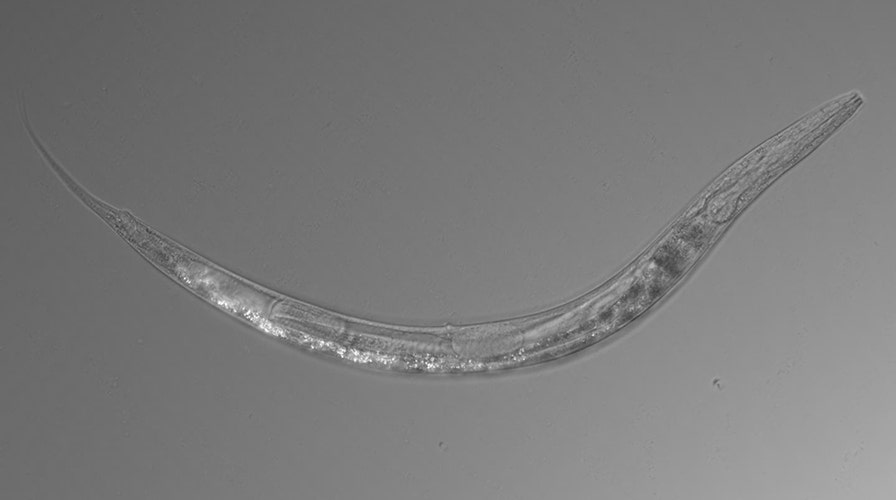Fox News Flash top headlines for Sept. 26
Fox News Flash top headlines for Sept. 26 are here. Check out what's clicking on Foxnews.com
Real life certainly is stranger than fiction.
A microscopic worm that has three different sexes, manages to survive a dose of arsenic that would kill a person 500 times over, and is able to carry its young inside of its body similar to a kangaroo has been discovered in one of the most uninhabitable places on Earth.
The research notes that the worm, known as Auanema sp., has both male and female members of the species, as well as hermaphrodites. The majority of worms, also known as nematodes, generally break down into males and hermaphrodites. It's also able to survive in the harsh conditions of Mono Lake in California, which is laced with arsenic, is "three times as salty as the ocean and has an alkaline pH of 10," according to a statement announcing the findings.

This newly discovered species of nematode is considered an extremophile – it thrives under high-salt, high-pH, arsenic-rich conditions that are otherwise hostile to life. But it is surprisingly versatile because it can also live in "normal" conditions in the laboratory. (Caltech)
'CRYPT-KEEPER' WASP ABLE TO CONTROL THE MINDS OF ITS VICTIMS
"Extremophiles can teach us so much about innovative strategies for dealing with stress," the study's lead author, Pei-Yin Shih, said in the statement. "Our study shows we still have much to learn about how these 1000-celled animals have mastered survival in extreme environments."
Shih and the rest of the team also discovered seven other species of microscopic worm in the lake, where it was previously thought that only bacteria, algae and brine shrimp were able to survive.
PINK GRASSHOPPER, UNUSUAL AND 'EXTREMELY RARE,' SPOTTED IN UK GARDEN
The researchers also noted that giving live birth (nematodes typically lay eggs) to its offspring may be useful for adapting to extreme environments.
"Auanema sp. also uniquely live birth their larvae after hatching the embryos in their uterus (viviparity)," the researchers wrote in the study. "Live birthing is a common feature of extremophile nematodes suggested to serve an adaptive role in extreme environments, and it may therefore be a strategy Auanema sp. uses to protect its progeny from the harsh conditions of Mono Lake."
Perhaps even more remarkable is that the researchers were able to study Auanema sp. in a lab setting and it thrived, an ability that very few extremophiles have. "This suggests that nematodes may have a genetic predisposition for resiliency and flexibility in adapting to harsh and benign environments alike," the statement added.
The researchers noted that they will continue to look for certain biochemical and genetic factors that are specific to this type of worm that allow them to be resistant to arsenic and whether these factors could be applied to humans, given that arsenic-contaminated drinking water is a major health concern around the world.
Aside from that, they also want to further understand the planet's diversity, one of the study's co-authors, James Siho Lee said.
"It's tremendously important that we appreciate and develop a curiosity for biodiversity," he said in the statement. "The next innovation for biotechnology could be out there in the wild. A new biodegradable sunscreen, for example, was discovered from extremophilic bacteria and algae. We have to protect and responsibly utilize wildlife."
The study has been published in the scientific journal Current Biology.

